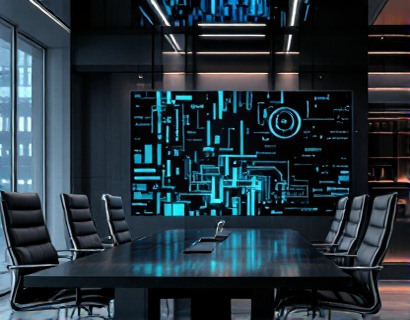Maximizing Architecture Firm Efficiency with Advanced Software Solutions
In the dynamic field of architecture, firms are constantly seeking ways to enhance their operational efficiency while maintaining a focus on creative excellence. Advanced software solutions have emerged as a pivotal tool in achieving this balance, optimizing internal processes and significantly enhancing the user experience. These technologies not only streamline business operations but also boost productivity and collaboration among team members. By leveraging sophisticated software, architecture firms can redefine their workflow, allowing architects to concentrate on their core mission: designing innovative and functional spaces.
Optimizing Internal Processes
One of the primary benefits of advanced software solutions in architecture firms is the optimization of internal processes. Traditional methods often involve manual tasks, paper-based documentation, and disjointed communication channels, which can lead to inefficiencies and errors. Modern software platforms automate routine tasks such as project scheduling, resource allocation, and document management. This automation reduces the time spent on administrative duties, enabling staff to dedicate more time to creative and strategic work.
Project management tools, for instance, provide a centralized platform where all project-related information is stored and accessible. These tools allow for real-time tracking of project progress, easy assignment of tasks, and seamless communication among team members. By having a single source of truth, firms can minimize miscommunications and ensure that everyone is aligned with the project goals and timelines. This level of organization not only improves efficiency but also enhances the overall quality of the work produced.
Enhancing User Experience
Beyond streamlining internal processes, advanced software solutions also play a crucial role in enhancing the user experience for clients and stakeholders. Architecture firms can leverage these tools to create more interactive and engaging presentations, allowing clients to visualize projects in a more immersive and realistic manner. Virtual reality (VR) and augmented reality (AR) technologies, when integrated with project management software, enable clients to walk through virtual models of proposed designs, providing valuable feedback and insights early in the design process.
Moreover, client management software helps in maintaining a high level of customer service. These platforms facilitate efficient communication, manage client interactions, and track feedback, ensuring that client needs are met promptly and effectively. By providing a superior user experience, architecture firms can build stronger relationships with their clients, leading to repeat business and positive referrals.
Boosting Productivity and Collaboration
Collaboration is a key factor in the success of any architecture firm. Advanced software solutions foster a collaborative environment by breaking down silos and enabling seamless interaction among different departments and team members. Cloud-based platforms ensure that all team members have access to the most up-to-date information, regardless of their location. This accessibility is particularly beneficial for firms with remote workers or multiple office locations, as it ensures consistency and cohesion in project execution.
Design collaboration tools allow architects, engineers, and other stakeholders to work together in real-time on the same project files. These tools support version control, change tracking, and commenting features, which help in maintaining a clear history of modifications and ensuring that all team members are on the same page. This level of collaboration not only speeds up the design process but also reduces the risk of errors and rework.
Resource Management and Cost Control
Effective resource management is essential for the financial health of architecture firms. Advanced software solutions provide robust tools for managing resources, including personnel, equipment, and materials. By optimizing resource allocation, firms can ensure that projects are completed on time and within budget. Workforce management tools help in scheduling staff based on project demands, skill sets, and availability, reducing overtime and underutilization.
Cost control is another critical aspect where software solutions shine. Financial management tools integrate with project management systems to provide real-time cost tracking and budget monitoring. These tools help in identifying potential cost overruns early, allowing firms to take corrective actions promptly. By maintaining a tight grip on costs, architecture firms can deliver projects that are not only creatively compelling but also financially viable.
Scalability and Flexibility
As architecture firms grow or take on more complex projects, the need for scalable and flexible software solutions becomes paramount. Advanced software platforms are designed to adapt to the evolving needs of the firm, whether it's expanding to new locations, taking on larger projects, or integrating new technologies. Scalability ensures that the software can handle increased workloads without compromising performance, while flexibility allows firms to customize the platform to fit their specific workflows and requirements.
Cloud-based solutions, in particular, offer a high degree of scalability and flexibility. They eliminate the need for extensive hardware investments and provide easy access to the latest features and updates. This means that firms can focus on their core activities without worrying about the underlying infrastructure, knowing that their software will support their growth and expansion.
Integration and Interoperability
In today's technology-driven environment, the ability to integrate and interoperate with other systems is a critical feature of advanced software solutions. Architecture firms often use a variety of tools and platforms, from CAD software to ERP systems. Advanced software solutions offer seamless integration with these tools, ensuring a smooth flow of data and reducing the need for manual data entry. This interoperability not only saves time but also minimizes the risk of data inconsistencies and errors.
APIs and middleware solutions enable different systems to communicate and share data effectively. For example, integrating a project management tool with a CAD software can ensure that design changes are automatically reflected in the project timeline, and vice versa. This level of integration enhances the overall efficiency of the firm, allowing for more cohesive and coordinated project execution.
Data Analytics and Insights
Data analytics is another area where advanced software solutions provide significant value to architecture firms. By leveraging big data and analytics, firms can gain valuable insights into their operations, client preferences, and market trends. These insights can inform strategic decisions, optimize resource allocation, and identify new business opportunities.
Project analytics tools can track key performance indicators (KPIs) such as project duration, cost overruns, and client satisfaction levels. These metrics help firms identify areas for improvement and measure the success of their projects. Additionally, market analytics can provide insights into industry trends, helping firms stay competitive and innovative. By data-driven decision-making, architecture firms can enhance their operational efficiency and drive growth.
User-Friendly Interfaces and Training
For advanced software solutions to be truly effective, they must be user-friendly and easy to adopt. A steep learning curve can hinder the benefits of these tools, leading to resistance from staff and reduced productivity. Modern software platforms are designed with intuitive interfaces that require minimal training, allowing users to quickly become proficient in their use.
Many software providers offer comprehensive training programs, including online tutorials, webinars, and on-site workshops. These resources help staff understand the features and capabilities of the software, ensuring a smooth transition from traditional methods to digital workflows. By investing in user training, firms can maximize the potential of their software investments and foster a culture of continuous improvement.
Conclusion
In conclusion, advanced software solutions are revolutionizing the way architecture firms operate, offering a range of benefits that extend from optimizing internal processes to enhancing the user experience for clients. By embracing these technologies, firms can streamline their business operations, boost productivity, and foster collaboration among team members. As the industry continues to evolve, the adoption of sophisticated software solutions will become increasingly essential for architecture firms looking to stay competitive and deliver exceptional results.










































